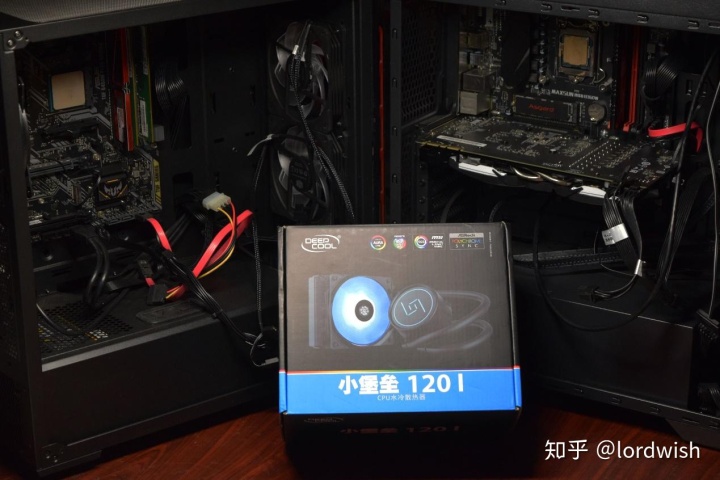在面试的时候我们常常问或者被问一个问题:几种中断下半部机制softirq、tasklet、workqueue有什么区别?linux为什么要设计这几种机制?真正能够回答清楚的人还是少数的。下面我们就详细分析一下这其中的区别。
本文的代码分析基于linux kernel 3.18.22和arm64架构,最好的学习方法还是”RTFSC”
1. linux中断
arm64和其他所有cpu架构的中断处理流程都是一样:正常执行流程被打断进入中断服务程序,保护现场、处理中断、恢复现场:

在整个中断处理过程中,arm64的cpu全局中断是自动disable的(PSTATE寄存器中的interrupt bit被masks)。如果用户想支持interrupt nested,需要自己在中断服务程序中使能中断。linux现在是不使用中断嵌套的。

1.1 cpu中断打开/关闭
arm64关闭和打开本地cpu的全局中断的方法,是操作SPSR(Saved Process Status Register)寄存器IRQ mask bit。

linux中arm64关闭和打开本地cpu中断的函数实现。
- arch/arm64/include/asm/irqflags.h:
- local_irq_disable() -> raw_local_irq_disable() -> arch_local_irq_disable()
- local_irq_enable() -> raw_local_irq_enable() -> arch_local_irq_enable()
static inline void arch_local_irq_enable(void)
{asm volatile(// (1) 清除DAIF中的bit2 I标志位,打开中断"msr daifclr, #2 // arch_local_irq_enable"::: "memory");
}static inline void arch_local_irq_disable(void)
{asm volatile(// (2) 设置DAIF中的bit2 I标志位,关闭中断"msr daifset, #2 // arch_local_irq_disable"::: "memory");
}static inline unsigned long arch_local_irq_save(void)
{unsigned long flags;asm volatile(// (3) 备份DAIF标志"mrs %0, daif // arch_local_irq_save\n""msr daifset, #2": "=r" (flags):: "memory");return flags;
}static inline unsigned long arch_local_save_flags(void)
{unsigned long flags;asm volatile(// (4) 恢复DAIF标志"mrs %0, daif // arch_local_save_flags": "=r" (flags):: "memory");return flags;
}1.2 中断控制器GIC
上面描述了cpu对全局中断的处理,但是还有一个工作需要有人去做:就是把外部中断、内部中断、cpu间中断等各种中断按照优先级、亲和力、私有性等发送给多个cpu。负责这个工作的就是中断控制器GIC(Generic Interrupt Controller)。

从软件角度上看,GIC可以分成两个功能模块:5
- Distributor。负责连接系统中所有的中断源,通过寄存器可以独立的配置每个中断的属性:priority、state、security、outing information、enable status。定义哪些中断可以转发到cpu core。
- CPU Interface。cpu core用来接收中断,寄存器主要提供的功能:mask、 identify 、control states of interrupts forwarded to that core。每个cpu core拥有自己的cpu interface。
对GIC来说,中断可以分成以下几种类型:6
- SGI(Software Generated Interrupt),Interrupt IDs 0-15。系统一般用其来实现IPI中断。
- PPI(Private Peripheral Interrupt),Interrupt IDs16-31。私有中断,这种中断对每个cpu都是独立一份的,比如per-core timer中断。
- SPI(Shared Peripheral Interrupt),Interrupt numbers 32-1020。最常用的外设中断,中断可以发给一个或者多个cpu。
- LPI(Locality-specific Peripheral Interrupt)。基于message的中断,GICv2和GICv1中不支持。
GIC从原理上理解并不难,但是如果涉及到级联等技术细节,整个初始化过程还是比较复杂。大家可以自行下载GIC手册:GIC-400、GIC-500学习,GIC代码分析也是一篇很不错的分析文章。
一款GIC相关的操作函数都会集中到irq_chip数据结构中,以GIC-400为例,它的相关操作函数如下:
- drivers/irqchip/irq-gic.c:
static struct irq_chip gic_chip = {.name = "GIC",.irq_mask = gic_mask_irq,.irq_unmask = gic_unmask_irq,.irq_eoi = gic_eoi_irq,.irq_set_type = gic_set_type,.irq_retrigger = gic_retrigger,
#ifdef CONFIG_SMP.irq_set_affinity = gic_set_affinity,
#endif.irq_set_wake = gic_set_wake,
};1.3 linux中断处理流程
从代码上看linux中断的处理流程大概是这样的:
从处理流程上看,对于gic的每个中断源,linux系统分配一个irq_desc数据结构与之对应。irq_desc结构中有两个中断处理函数desc->handle_irq()和desc->action->handler(),这两个函数代表中断处理的两个层级:
desc->handle_irq()。第一层次的中断处理函数,这个是系统在初始化时根据中断源的特征统一分配的,不同类型的中断源的gic操作是不一样的,把这些通用gic操作提取出来就是第一层次的操作函数。具体实现包括:
handle_fasteoi_irq();
handle_simple_irq();
handle_edge_irq();
handle_level_irq();
handle_percpu_irq();
handle_percpu_devid_irq();desc->action->handler()。第二层次的中断处理函数,由用户注册实现具体设备的驱动服务程序,都是和GIC操作无关的代码。同时一个中断源可以多个设备共享,所以一个desc可以挂载多个action,由链表结构组织起来。
1.4 中断服务注册
从上一节的中断二层结构中可以看到第二层的中断处理函数desc->action->handler是由用户来注册的,下面我们来分析具体注册过程:
- kernel/irq/manage.c:
- request_irq() -> request_threaded_irq() -> __setup_irq()
static inline int __must_check
request_irq(unsigned int irq, irq_handler_t handler, unsigned long flags,const char *name, void *dev)
{return request_threaded_irq(irq, handler, NULL, flags, name, dev);
}
| →
int request_threaded_irq(unsigned int irq, irq_handler_t handler,irq_handler_t thread_fn, unsigned long irqflags,const char *devname, void *dev_id)
{struct irqaction *action;struct irq_desc *desc;int retval;/** Sanity-check: shared interrupts must pass in a real dev-ID,* otherwise we'll have trouble later trying to figure out* which interrupt is which (messes up the interrupt freeing* logic etc).*/if ((irqflags & IRQF_SHARED) && !dev_id)return -EINVAL;// (1)根据中断号找到对应的desc结构desc = irq_to_desc(irq);if (!desc)return -EINVAL;if (!irq_settings_can_request(desc) ||WARN_ON(irq_settings_is_per_cpu_devid(desc)))return -EINVAL;// (2)如果action->handler为空,那么用户是想创建一个线程化中断// 将线程化中断的action->handler初始化为irq_default_primary_handler()// irq_default_primary_handler()非常简单,只是返回一个IRQ_WAKE_THREAD值if (!handler) {if (!thread_fn)return -EINVAL;handler = irq_default_primary_handler;}// (3)分配新的action数据结构action = kzalloc(sizeof(struct irqaction), GFP_KERNEL);if (!action)return -ENOMEM;action->handler = handler;action->thread_fn = thread_fn;action->flags = irqflags;action->name = devname;action->dev_id = dev_id;chip_bus_lock(desc);// (4)将新的action结构安装到desc中retval = __setup_irq(irq, desc, action);chip_bus_sync_unlock(desc);if (retval)kfree(action);#ifdef CONFIG_DEBUG_SHIRQ_FIXMEif (!retval && (irqflags & IRQF_SHARED)) {/** It's a shared IRQ -- the driver ought to be prepared for it* to happen immediately, so let's make sure....* We disable the irq to make sure that a 'real' IRQ doesn't* run in parallel with our fake.*/unsigned long flags;disable_irq(irq);local_irq_save(flags);handler(irq, dev_id);local_irq_restore(flags);enable_irq(irq);}
#endifreturn retval;
}
|| →
static int
__setup_irq(unsigned int irq, struct irq_desc *desc, struct irqaction *new)
{struct irqaction *old, **old_ptr;unsigned long flags, thread_mask = 0;int ret, nested, shared = 0;cpumask_var_t mask;if (!desc)return -EINVAL;if (desc->irq_data.chip == &no_irq_chip)return -ENOSYS;if (!try_module_get(desc->owner))return -ENODEV;/** Check whether the interrupt nests into another interrupt* thread.*/nested = irq_settings_is_nested_thread(desc);// (4.1)判断中断是否是支持嵌套if (nested) {if (!new->thread_fn) {ret = -EINVAL;goto out_mput;}/** Replace the primary handler which was provided from* the driver for non nested interrupt handling by the* dummy function which warns when called.*/new->handler = irq_nested_primary_handler;} else {// (4.2)判断中断是否可以被线程化// 如果中断没有设置_IRQ_NOTHREAD标志 & 强制中断线程化标志被设置(force_irqthreads=1)// 强制把中断线程化:// new->thread_fn = new->handler;new->handler = irq_default_primary_handler;if (irq_settings_can_thread(desc))irq_setup_forced_threading(new);}/** Create a handler thread when a thread function is supplied* and the interrupt does not nest into another interrupt* thread.*/// (4.3)如果是线程化中断,创建线程化中断对应的线程if (new->thread_fn && !nested) {struct task_struct *t;static const struct sched_param param = {.sched_priority = MAX_USER_RT_PRIO/2,};// 创建线程t = kthread_create(irq_thread, new, "irq/%d-%s", irq,new->name);if (IS_ERR(t)) {ret = PTR_ERR(t);goto out_mput;}sched_setscheduler_nocheck(t, SCHED_FIFO, ¶m);/** We keep the reference to the task struct even if* the thread dies to avoid that the interrupt code* references an already freed task_struct.*/get_task_struct(t);// 赋值给->thread成员new->thread = t;/** Tell the thread to set its affinity. This is* important for shared interrupt handlers as we do* not invoke setup_affinity() for the secondary* handlers as everything is already set up. Even for* interrupts marked with IRQF_NO_BALANCE this is* correct as we want the thread to move to the cpu(s)* on which the requesting code placed the interrupt.*/set_bit(IRQTF_AFFINITY, &new->thread_flags);}if (!alloc_cpumask_var(&mask, GFP_KERNEL)) {ret = -ENOMEM;goto out_thread;}/** Drivers are often written to work w/o knowledge about the* underlying irq chip implementation, so a request for a* threaded irq without a primary hard irq context handler* requires the ONESHOT flag to be set. Some irq chips like* MSI based interrupts are per se one shot safe. Check the* chip flags, so we can avoid the unmask dance at the end of* the threaded handler for those.*/if (desc->irq_data.chip->flags & IRQCHIP_ONESHOT_SAFE)new->flags &= ~IRQF_ONESHOT;/** The following block of code has to be executed atomically*/// (4.4)找到最后一个action结构raw_spin_lock_irqsave(&desc->lock, flags);old_ptr = &desc->action;old = *old_ptr;if (old) {/** Can't share interrupts unless both agree to and are* the same type (level, edge, polarity). So both flag* fields must have IRQF_SHARED set and the bits which* set the trigger type must match. Also all must* agree on ONESHOT.*/if (!((old->flags & new->flags) & IRQF_SHARED) ||((old->flags ^ new->flags) & IRQF_TRIGGER_MASK) ||((old->flags ^ new->flags) & IRQF_ONESHOT))goto mismatch;/* All handlers must agree on per-cpuness */if ((old->flags & IRQF_PERCPU) !=(new->flags & IRQF_PERCPU))goto mismatch;/* add new interrupt at end of irq queue */do {/** Or all existing action->thread_mask bits,* so we can find the next zero bit for this* new action.*/thread_mask |= old->thread_mask;old_ptr = &old->next;old = *old_ptr;} while (old);// 如果有多个action,共享标志设为1shared = 1;}/** Setup the thread mask for this irqaction for ONESHOT. For* !ONESHOT irqs the thread mask is 0 so we can avoid a* conditional in irq_wake_thread().*/if (new->flags & IRQF_ONESHOT) {/** Unlikely to have 32 resp 64 irqs sharing one line,* but who knows.*/if (thread_mask == ~0UL) {ret = -EBUSY;goto out_mask;}/** The thread_mask for the action is or'ed to* desc->thread_active to indicate that the* IRQF_ONESHOT thread handler has been woken, but not* yet finished. The bit is cleared when a thread* completes. When all threads of a shared interrupt* line have completed desc->threads_active becomes* zero and the interrupt line is unmasked. See* handle.c:irq_wake_thread() for further information.** If no thread is woken by primary (hard irq context)* interrupt handlers, then desc->threads_active is* also checked for zero to unmask the irq line in the* affected hard irq flow handlers* (handle_[fasteoi|level]_irq).** The new action gets the first zero bit of* thread_mask assigned. See the loop above which or's* all existing action->thread_mask bits.*/new->thread_mask = 1 << ffz(thread_mask);} else if (new->handler == irq_default_primary_handler &&!(desc->irq_data.chip->flags & IRQCHIP_ONESHOT_SAFE)) {/** The interrupt was requested with handler = NULL, so* we use the default primary handler for it. But it* does not have the oneshot flag set. In combination* with level interrupts this is deadly, because the* default primary handler just wakes the thread, then* the irq lines is reenabled, but the device still* has the level irq asserted. Rinse and repeat....** While this works for edge type interrupts, we play* it safe and reject unconditionally because we can't* say for sure which type this interrupt really* has. The type flags are unreliable as the* underlying chip implementation can override them.*/pr_err("Threaded irq requested with handler=NULL and !ONESHOT for irq %d\n",irq);ret = -EINVAL;goto out_mask;}// (4.5)如果是第一个action,做一些初始化工作if (!shared) {ret = irq_request_resources(desc);if (ret) {pr_err("Failed to request resources for %s (irq %d) on irqchip %s\n",new->name, irq, desc->irq_data.chip->name);goto out_mask;}init_waitqueue_head(&desc->wait_for_threads);/* Setup the type (level, edge polarity) if configured: */if (new->flags & IRQF_TRIGGER_MASK) {ret = __irq_set_trigger(desc, irq,new->flags & IRQF_TRIGGER_MASK);if (ret)goto out_mask;}desc->istate &= ~(IRQS_AUTODETECT | IRQS_SPURIOUS_DISABLED | \IRQS_ONESHOT | IRQS_WAITING);irqd_clear(&desc->irq_data, IRQD_IRQ_INPROGRESS);if (new->flags & IRQF_PERCPU) {irqd_set(&desc->irq_data, IRQD_PER_CPU);irq_settings_set_per_cpu(desc);}if (new->flags & IRQF_ONESHOT)desc->istate |= IRQS_ONESHOT;if (irq_settings_can_autoenable(desc))irq_startup(desc, true);else/* Undo nested disables: */desc->depth = 1;/* Exclude IRQ from balancing if requested */if (new->flags & IRQF_NOBALANCING) {irq_settings_set_no_balancing(desc);irqd_set(&desc->irq_data, IRQD_NO_BALANCING);}// 设置中断亲和力/* Set default affinity mask once everything is setup */setup_affinity(irq, desc, mask);} else if (new->flags & IRQF_TRIGGER_MASK) {unsigned int nmsk = new->flags & IRQF_TRIGGER_MASK;unsigned int omsk = irq_settings_get_trigger_mask(desc);if (nmsk != omsk)/* hope the handler works with current trigger mode */pr_warning("irq %d uses trigger mode %u; requested %u\n",irq, nmsk, omsk);}// (4.6)将新的action插入到desc链表中new->irq = irq;*old_ptr = new;irq_pm_install_action(desc, new);/* Reset broken irq detection when installing new handler */desc->irq_count = 0;desc->irqs_unhandled = 0;/** Check whether we disabled the irq via the spurious handler* before. Reenable it and give it another chance.*/// (4.7)如果中断之前被虚假disable了,重新enable中断if (shared && (desc->istate & IRQS_SPURIOUS_DISABLED)) {desc->istate &= ~IRQS_SPURIOUS_DISABLED;__enable_irq(desc, irq);}raw_spin_unlock_irqrestore(&desc->lock, flags);/** Strictly no need to wake it up, but hung_task complains* when no hard interrupt wakes the thread up.*/// (4.8)唤醒线程化中断对应的线程if (new->thread)wake_up_process(new->thread);register_irq_proc(irq, desc);new->dir = NULL;register_handler_proc(irq, new);free_cpumask_var(mask);return 0;mismatch:if (!(new->flags & IRQF_PROBE_SHARED)) {pr_err("Flags mismatch irq %d. %08x (%s) vs. %08x (%s)\n",irq, new->flags, new->name, old->flags, old->name);
#ifdef CONFIG_DEBUG_SHIRQdump_stack();
#endif}ret = -EBUSY;out_mask:raw_spin_unlock_irqrestore(&desc->lock, flags);free_cpumask_var(mask);out_thread:if (new->thread) {struct task_struct *t = new->thread;new->thread = NULL;kthread_stop(t);put_task_struct(t);}
out_mput:module_put(desc->owner);return ret;
}
1.5 中断线程化
从上一节可以看到,使用request_irq()注册的是传统中断,而直接使用request_threaded_irq()注册的是线程化中断。线程化中断的主要目的把中断上下文的任务迁移到线程中,减少系统关中断的时间,增强系统的实时性。
中断对应的线程命名规则为:
t = kthread_create(irq_thread, new, "irq/%d-%s", irq,new->name);我们通过ps命令查看系统中的中断线程,注意这些线程是实时线程SCHED_FIFO:
root@:/ # ps | grep "irq/"
root 171 2 0 0 irq_thread 0000000000 S irq/389-charger
root 239 2 0 0 irq_thread 0000000000 S irq/296-PS_int-
root 247 2 0 0 irq_thread 0000000000 S irq/297-1124000
root 1415 2 0 0 irq_thread 0000000000 S irq/293-goodix_
root@a0255:/ #
线程化中断的创建和处理任务流程如下:
线程和action是一一对应的,即用户注册一个中断处理程序对应一个中断线程。
1.6 外设中断打开/关闭
前面的章节讲述了本地cpu全局中断的enable/disable。如果要操作单个中断源的enable/disable,使用enable_irq()/disable_irq()函数。最后调用主要是GIC chip相关的函数:
- kernel/irq/manage.c:
- enable_irq() -> __enable_irq() -> irq_enable()
void enable_irq(unsigned int irq)
{unsigned long flags;struct irq_desc *desc = irq_get_desc_buslock(irq, &flags, IRQ_GET_DESC_CHECK_GLOBAL);if (!desc)return;if (WARN(!desc->irq_data.chip,KERN_ERR "enable_irq before setup/request_irq: irq %u\n", irq))goto out;__enable_irq(desc, irq);
out:irq_put_desc_busunlock(desc, flags);
}
| →
void __enable_irq(struct irq_desc *desc, unsigned int irq)
{switch (desc->depth) {case 0:err_out:WARN(1, KERN_WARNING "Unbalanced enable for IRQ %d\n", irq);break;case 1: {if (desc->istate & IRQS_SUSPENDED)goto err_out;/* Prevent probing on this irq: */irq_settings_set_noprobe(desc);irq_enable(desc);check_irq_resend(desc, irq);/* fall-through */}default:desc->depth--;}
}
|| →
void irq_enable(struct irq_desc *desc)
{// 操作GIC chip对应的函数irq_state_clr_disabled(desc);if (desc->irq_data.chip->irq_enable)desc->irq_data.chip->irq_enable(&desc->irq_data);elsedesc->irq_data.chip->irq_unmask(&desc->irq_data);irq_state_clr_masked(desc);
}- kernel/irq/manage.c:
- enable_irq() -> __enable_irq() -> irq_enable()
void disable_irq(unsigned int irq)
{if (!__disable_irq_nosync(irq))synchronize_irq(irq);
}
| →
static int __disable_irq_nosync(unsigned int irq)
{unsigned long flags;struct irq_desc *desc = irq_get_desc_buslock(irq, &flags, IRQ_GET_DESC_CHECK_GLOBAL);if (!desc)return -EINVAL;__disable_irq(desc, irq);irq_put_desc_busunlock(desc, flags);return 0;
}
|| →
void __disable_irq(struct irq_desc *desc, unsigned int irq)
{if (!desc->depth++)irq_disable(desc);
}
||| →
void irq_disable(struct irq_desc *desc)
{// 操作GIC chip对应的函数irq_state_set_disabled(desc);if (desc->irq_data.chip->irq_disable) {desc->irq_data.chip->irq_disable(&desc->irq_data);irq_state_set_masked(desc);}
}| →
void synchronize_irq(unsigned int irq)
{struct irq_desc *desc = irq_to_desc(irq);if (desc) {__synchronize_hardirq(desc);/** We made sure that no hardirq handler is* running. Now verify that no threaded handlers are* active.*/// 如果是线程化中断,需要等到线程执行完成wait_event(desc->wait_for_threads,!atomic_read(&desc->threads_active));}
}1.7 中断亲和力
同样基于GIC chip提供的能力,我们能配置中断源对cpu的亲和力。
- kernel/irq/manage.c:
- enable_irq() -> __enable_irq() -> irq_enable()
static inline int
irq_set_affinity(unsigned int irq, const struct cpumask *cpumask)
{return __irq_set_affinity(irq, cpumask, false);
}
| →
int __irq_set_affinity(unsigned int irq, const struct cpumask *mask, bool force)
{struct irq_desc *desc = irq_to_desc(irq);unsigned long flags;int ret;if (!desc)return -EINVAL;raw_spin_lock_irqsave(&desc->lock, flags);ret = irq_set_affinity_locked(irq_desc_get_irq_data(desc), mask, force);raw_spin_unlock_irqrestore(&desc->lock, flags);return ret;
}
|| →
int irq_set_affinity_locked(struct irq_data *data, const struct cpumask *mask,bool force)
{struct irq_chip *chip = irq_data_get_irq_chip(data);struct irq_desc *desc = irq_data_to_desc(data);int ret = 0;if (!chip || !chip->irq_set_affinity)return -EINVAL;if (irq_can_move_pcntxt(data)) {ret = irq_do_set_affinity(data, mask, force);} else {irqd_set_move_pending(data);irq_copy_pending(desc, mask);}if (desc->affinity_notify) {kref_get(&desc->affinity_notify->kref);schedule_work(&desc->affinity_notify->work);}irqd_set(data, IRQD_AFFINITY_SET);return ret;
}
||| →
int irq_do_set_affinity(struct irq_data *data, const struct cpumask *mask,bool force)
{struct irq_desc *desc = irq_data_to_desc(data);struct irq_chip *chip = irq_data_get_irq_chip(data);int ret;// 操作GIC chip对应的函数ret = chip->irq_set_affinity(data, mask, force);switch (ret) {case IRQ_SET_MASK_OK:case IRQ_SET_MASK_OK_DONE:
#ifdef CONFIG_MTK_IRQ_NEW_DESIGNupdate_affinity_settings(desc, mask, true);
#elsecpumask_copy(data->affinity, mask);
#endifcase IRQ_SET_MASK_OK_NOCOPY:irq_set_thread_affinity(desc);ret = 0;}return ret;
}
2. linux中断下半部
接下来就是大名鼎鼎的中断下半部了,包括:softirq、tasklet、workqueue。中断下半部的主要目的就是减少系统关中断的时间,把少关键代码放在中断中做,大部分处理代码放到不用关中断的空间去做。
上面有最激进的方法中断线程化,但是大部分时候还是需要用到中断上、下半部的方法。
workqueue在另外文章中已经有详细解析,本处只解析softirq、tasklet。
2.1 preempt_count
static __always_inline int preempt_count(void)
{return current_thread_info()->preempt_count; /* 0 => preemptable, <0 => bug */
}开始之前先了解一下preempt_count这个背景知识,preempt_count是thread_info结构中的一个字段,用来表示当前进程能否被抢占。
所谓的抢占:是指在进程在内核空间运行,如果主动不释放cpu,在时间片用完或者高优先级任务就绪的情况下,会被强行剥夺掉cpu的使用权。
但是进程可能在做一些关键操作,不能被抢占,被抢占后系统会出错。所以linux设计了preempt_count字段,=0可以被抢占,>0不能被抢占。
进程在中断返回内核态时,做是否可抢占的检查:
- arch/arm64/kernel/entry.s:
- el1_irq() -> __enable_irq() -> irq_enable()
.align 6
el1_irq:kernel_entry 1enable_dbg
#ifdef CONFIG_TRACE_IRQFLAGSbl trace_hardirqs_off
#endif
#ifdef CONFIG_MTPROFbl MT_trace_hardirqs_off
#endifirq_handler#ifdef CONFIG_PREEMPTget_thread_info tskldr w24, [tsk, #TI_PREEMPT] // get preempt count// (1)如果preempt_count!=0,不进行可抢占判断cbnz w24, 1f // preempt count != 0ldr x0, [tsk, #TI_FLAGS] // get flags// (2)如果preempt_count==0 & TIF_NEED_RESCHED被置位// 进行调度tbz x0, #TIF_NEED_RESCHED, 1f // needs rescheduling?bl el1_preempt
1:
#endif
#ifdef CONFIG_MTPROFbl MT_trace_hardirqs_on
#endif
#ifdef CONFIG_TRACE_IRQFLAGSbl trace_hardirqs_on
#endifkernel_exit 1
ENDPROC(el1_irq)#ifdef CONFIG_PREEMPT
el1_preempt:mov x24, lr// (3)抢占调度
1: bl preempt_schedule_irq // irq en/disable is done insideldr x0, [tsk, #TI_FLAGS] // get new tasks TI_FLAGStbnz x0, #TIF_NEED_RESCHED, 1b // needs rescheduling?ret x24
#endif| →asmlinkage __visible void __sched preempt_schedule_irq(void)
{enum ctx_state prev_state;/* Catch callers which need to be fixed */BUG_ON(preempt_count() || !irqs_disabled());prev_state = exception_enter();do {__preempt_count_add(PREEMPT_ACTIVE);local_irq_enable();__schedule();local_irq_disable();__preempt_count_sub(PREEMPT_ACTIVE);/** Check again in case we missed a preemption opportunity* between schedule and now.*/barrier();} while (need_resched());exception_exit(prev_state);
}虽然preempt_count>0就是禁止抢占,linux进一步按照各种场景对preempt_count bit进行了资源划分:
| reserved bits | bit21 | bit20 | bit19-bit16 | bit15-bit8 | bit7-bit0 |
|---|---|---|---|---|---|
| PREEMPT_ACTIVE | NMI | HARDIRQ | SOFTIRQ | PREEMPT |
/** PREEMPT_MASK: 0x000000ff* SOFTIRQ_MASK: 0x0000ff00* HARDIRQ_MASK: 0x000f0000* NMI_MASK: 0x00100000* PREEMPT_ACTIVE: 0x00200000*/
#define PREEMPT_BITS 8
#define SOFTIRQ_BITS 8
#define HARDIRQ_BITS 4
#define NMI_BITS 1各场景分别利用各自的bit来disable/enable抢占:
- 普通场景(PREEMPT_MASK)。对应函数preempt_disable()、preempt_enable()。
- 软中断场景(PREEMPT_MASK)。对应函数local_bh_disable()、local_bh_enable()。
- 普通中断场景(HARDIRQ_MASK)。对应函数__irq_enter()、__irq_exit()。
- NMI中断场景(NMI_MASK)。对应函数nmi_enter()、nmi_exit()。
所以反过来,我们也可以通过preempt_count的值来判断当前在什么场景:
#define in_irq() (hardirq_count())
#define in_softirq() (softirq_count())
#define in_interrupt() (irq_count())
#define in_serving_softirq() (softirq_count() & SOFTIRQ_OFFSET)
#define in_nmi() (preempt_count() & NMI_MASK)#define hardirq_count() (preempt_count() & HARDIRQ_MASK)
#define softirq_count() (preempt_count() & SOFTIRQ_MASK)
#define irq_count() (preempt_count() & (HARDIRQ_MASK | SOFTIRQ_MASK \| NMI_MASK))2.2 softirq
回到中断上下半部的架构,linux系统虽然将大部分工作移出了中断上下文,不关闭中断。但是它也希望移出的工作能够很快的得到执行,软中断为了保证自己能很快执行,使用__local_bh_disable_ip()禁止抢占。
softirq的具体实现机制如下:
- 系统支持固定的几种软中断,softirq_vec数组用来记录这些软中断执行函数:
enum
{HI_SOFTIRQ=0,TIMER_SOFTIRQ,NET_TX_SOFTIRQ,NET_RX_SOFTIRQ,BLOCK_SOFTIRQ,BLOCK_IOPOLL_SOFTIRQ,TASKLET_SOFTIRQ,SCHED_SOFTIRQ,HRTIMER_SOFTIRQ,RCU_SOFTIRQ, /* Preferable RCU should always be the last softirq */NR_SOFTIRQS
};// 注册软中断的服务程序
void open_softirq(int nr, void (*action)(struct softirq_action *))
{softirq_vec[nr].action = action;
}//TASKLET_SOFTIRQ、HI_SOFTIRQ两个软中断用来给tasklet服务。open_softirq(TASKLET_SOFTIRQ, tasklet_action);open_softirq(HI_SOFTIRQ, tasklet_hi_action);- 使用irq_stat[cpu].__softirq_pending来记录每个cpu上所有softirq的pending状态,raise_softirq()用来置位一个softirq pending:
void raise_softirq(unsigned int nr)
{unsigned long flags;local_irq_save(flags);raise_softirq_irqoff(nr);local_irq_restore(flags);
}
| →
inline void raise_softirq_irqoff(unsigned int nr)
{__raise_softirq_irqoff(nr);if (!in_interrupt())wakeup_softirqd();
}
|| →
void __raise_softirq_irqoff(unsigned int nr)
{trace_softirq_raise(nr);or_softirq_pending(1UL << nr);
}
||| →
#define or_softirq_pending(x) (local_softirq_pending() |= (x))#ifndef __ARCH_IRQ_STAT
extern irq_cpustat_t irq_stat[]; /* defined in asm/hardirq.h */
#define __IRQ_STAT(cpu, member) (irq_stat[cpu].member)
#endif/* arch independent irq_stat fields */
#define local_softirq_pending() \__IRQ_STAT(smp_processor_id(), __softirq_pending)
- softirq的执行有两个时刻:在退出中断irq_exit()时或者在softirqd线程当中:
软中断使用smpboot_register_percpu_thread()函数,给每个cpu上创建了对应的softirqd线程:
root@:/ # ps | grep softirq
root 3 2 0 0 smpboot_th 0000000000 S ksoftirqd/0
root 12 2 0 0 __kthread_ 0000000000 R ksoftirqd/1
root 16 2 0 0 __kthread_ 0000000000 R ksoftirqd/2
root 20 2 0 0 __kthread_ 0000000000 R ksoftirqd/3
root 24 2 0 0 __kthread_ 0000000000 R ksoftirqd/4
root 28 2 0 0 __kthread_ 0000000000 R ksoftirqd/5
root 32 2 0 0 __kthread_ 0000000000 R ksoftirqd/6
root 36 2 0 0 __kthread_ 0000000000 R ksoftirqd/7软中断优先在irq_exit()中执行,如果超过时间等条件转为softirqd线程中执行。满足以下任一条件软中断在softirqd线程中执行:
- 在irq_exit()->__do_softirq()中运行,时间超过2ms。
- 在irq_exit()->__do_softirq()中运行,轮询软中断超过10次。
- 在irq_exit()->__do_softirq()中运行,本线程需要被调度。
- 调用raise_softirq()唤醒软中断时,不在中断环境中。
我们也看到,软中断处理是按照优先级逐个调用softirq_vec[]数组中的软中断处理函数,所以前面的软中断是可以阻塞后面的软中断的。这个在我们写程序的时候需要注意。
2.3 tasklet
linux已经有了softirq机制,为什么还需要tasklet机制?最主要的原因是softirq是多cpu执行的,可能碰到很多重入的问题,而tasklet同一时刻只能在一个cpu上执行,不需要处理重入互斥问题。另外linux也不建议用户去添加新的软中断。
下面我们来具体分析一下tasklet的实现机制:
- per-cpu变量tasklet_vec/tasklet_hi_vec以链表的形式记录了当前cpu需要处理的tasklet任务:
void __init softirq_init(void)
{int cpu;for_each_possible_cpu(cpu) {// (1)tasklet_vec为低优先级的tasklet链表per_cpu(tasklet_vec, cpu).tail =&per_cpu(tasklet_vec, cpu).head;// (2)tasklet_hi_vec为高优先级的tasklet链表per_cpu(tasklet_hi_vec, cpu).tail =&per_cpu(tasklet_hi_vec, cpu).head;}
}- push一个tasklet任务:
static inline void tasklet_schedule(struct tasklet_struct *t)
{if (!test_and_set_bit(TASKLET_STATE_SCHED, &t->state))__tasklet_schedule(t);
}
| →
void __tasklet_schedule(struct tasklet_struct *t)
{unsigned long flags;local_irq_save(flags);// (1)将新的tasklet插入到本cpu链表尾部t->next = NULL;*__this_cpu_read(tasklet_vec.tail) = t;__this_cpu_write(tasklet_vec.tail, &(t->next));// (2)raise软中断来处理taskletraise_softirq_irqoff(TASKLET_SOFTIRQ);local_irq_restore(flags);
}- 处理一个tasklet任务:
static void tasklet_action(struct softirq_action *a)
{struct tasklet_struct *list;local_irq_disable();// (1)list取出当前链表中所有已有的taskletlist = __this_cpu_read(tasklet_vec.head);// (2)tasklet_vec.head和tasklet_vec.tail返回初始化状态,继续接收新的tasklet__this_cpu_write(tasklet_vec.head, NULL);__this_cpu_write(tasklet_vec.tail, this_cpu_ptr(&tasklet_vec.head));local_irq_enable();// (3)逐个处理取出的list链表中的 taskletwhile (list) {struct tasklet_struct *t = list;list = list->next;// (4)tasklet互斥锁,保证tasklet同时只能在一个cpu上执行if (tasklet_trylock(t)) {if (!atomic_read(&t->count)) {// (6)在tasklet运行前清除TASKLET_STATE_SCHED标志// 这个时候tasklet可以重新加入新的队列了,但是还不能执行if (!test_and_clear_bit(TASKLET_STATE_SCHED,&t->state))BUG();// (7)执行实际的tasklet处理函数t->func(t->data);// (8)释放tasklet锁,其他cpu可以运行这个tasklet了tasklet_unlock(t);continue;}tasklet_unlock(t);}local_irq_disable();// (5)如果获取tasklet互斥锁失败,先加入到cpu tasklet_vec链表中// 下次执行t->next = NULL;*__this_cpu_read(tasklet_vec.tail) = t;__this_cpu_write(tasklet_vec.tail, &(t->next));__raise_softirq_irqoff(TASKLET_SOFTIRQ);local_irq_enable();}
}参考资料
- ARM Cortex-A Series Programmer’s Guide for ARMv8-A ↩
- ARM Cortex-A Series Programmer’s Guide for ARMv8-A ↩
- ARM Cortex-A Series Programmer’s Guide for ARMv8-A ↩
- GIC代码分析 ↩
- ARM Cortex-A Series Programmer’s Guide for ARMv8-A ↩
- ARM Cortex-A Series Programmer’s Guide for ARMv8-A ↩









